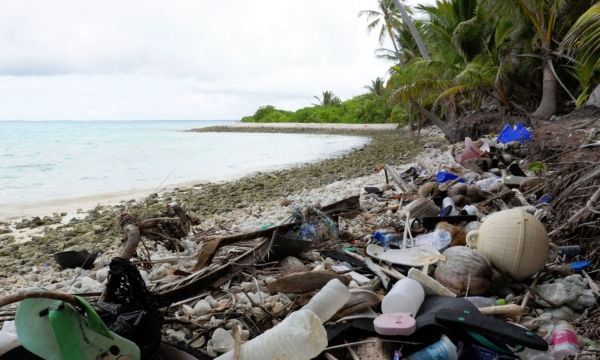The Cocos Keeling Islands, a remote archipelago in the Indian Ocean, are covered with an estimated 414 million pieces of plastic pollution, weighing 238 tons, according to a new study published in the journal Scientific Reports. The islands are home to fewer than 600 people and sit 1,300 miles off the northwest coast of Australia. The plastic buildup, scientists argue, is emblematic of just how much plastic waste is circulating in the world’s oceans.
Researchers measured plastic pollution on seven of the archipelago’s 27 islands, marking off transects and counting all the plastic pollution inside each one. They also dug down 4 inches into the sand to measure any waste buried under the surface. They then multiplied their findings by the island chain’s total beach area. Of the estimated 414 million pieces of plastic on the islands, 380 million were found buried in the sand, NPR reported. The most commonly found waste were single-use items such as bottle caps and straws. Scientists also estimated that some 977,000 shoes and sandals and 373,000 toothbrushes litter Cocos Keeling’s beaches.
Read more at Yale Environment 360
Photo: Plastic debris covers the north side of one of the Cocos Keeling Islands in the Indian Ocean. PHOTO COURTESY OF JENNIFER LAVERS


